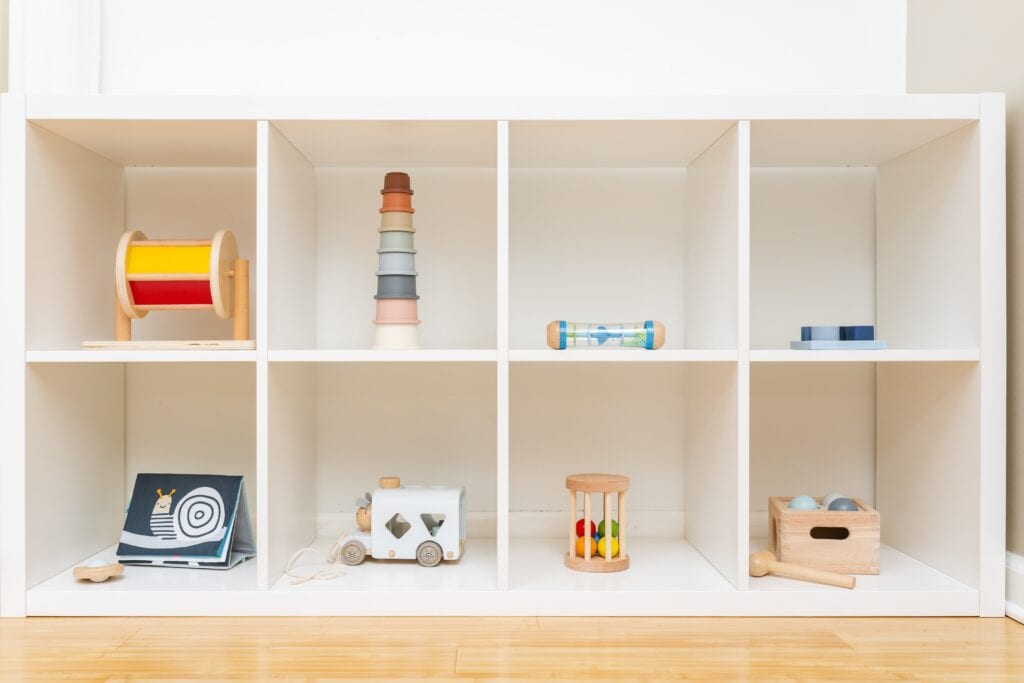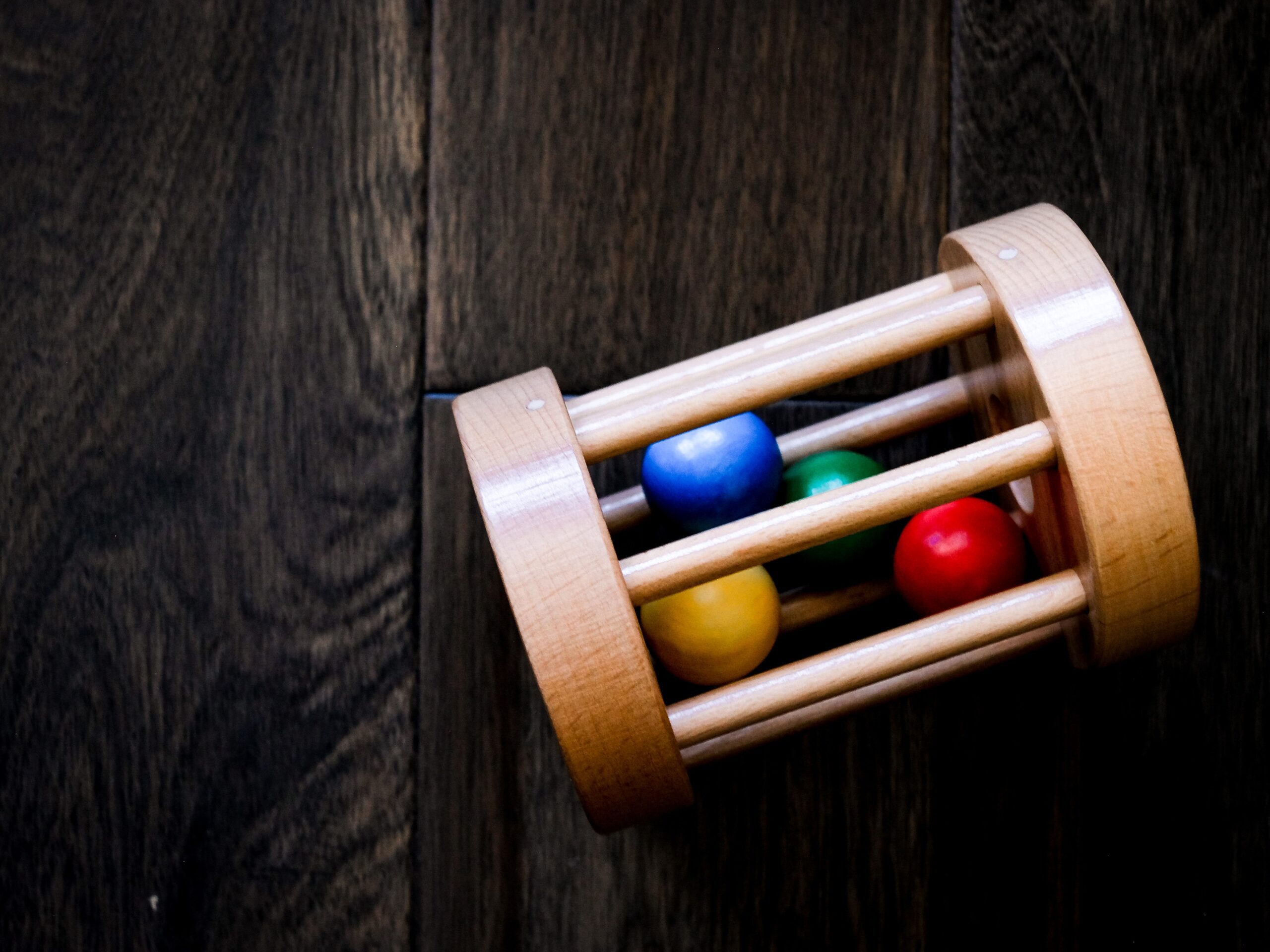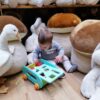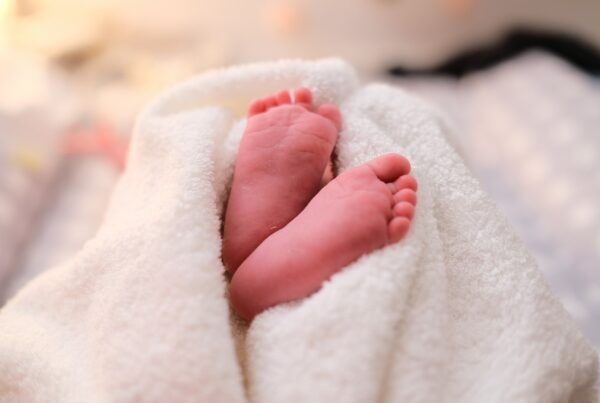In the last article we have learned a bit more about the Montessori method and I gave you an initial overview of how you can apply it at home. Today we are going a step further and learning about Montessori activities for babies from 0 to 12 months old.
One of the core concepts of Montessori’s philosophy is that different materials will be able to engage your baby in different ways and those materials will change as she keeps growing. The traditional Montessori objects are made with natural materials, such as wood, cotton and glass, their aim is to stimulate senses, improve fine motor and let babies understand the cause-effect logic of their actions.
Parents simply need to help the baby create her own playing area, and that’s why using a mat is the best way to create a well delimited area for your baby.
To make sure babies stay focused, ideally this space must be clean, tidy, stimulating, set up with suitable and natural materials. As I said before, your role as a parent should be just to propose new activities, one at a time, and let the baby play with that and discover things by herself.
With all of this being said, let’s dive deep into the activities you can consider:
Mobiles
There are 4 different types of traditional Montessori mobiles:

- The Munari mobile. Ideal in the first 3 weeks. A transparent sphere and some geometric shapes of black and white paper are hanged on a light structure above baby’s head.
In the first months, newborns need to develop and stimulate their view. They can see properly, they recognize only objects at a distance of 20-25cm from their eyes and with high contrast color such as black and white which are the first color that a newborn can distinguish. - The octahedron mobile. After the first 5 weeks. When babies are starting to be able to distinguish colors, Montessori suggests to introduce this mobile composed by three geometric figures – the octahedra, which look like two pyramids “welded” one on top of the other – colored with shades of yellow (the smallest), red (the medium) and blue ( the biggest).
- The Gobbi mobile. After 2 months babies are able to distinguish colors and their shade. For this reason, Gobbi’s is composed by a series of 5 spheres of different shades of the same color. Each spheres is covered with a thread that reflects the light.
- The dancer mobile. This mobile, to be used around her 3rd month, is made of holographic paper that shine and shimmer in the light. The different piece of paper float and move easily creating a beautiful “dancer” for the child to tract and watch. This mobile should be closer to the babies, allowing them to reach the dancers when moving their hands.
On the internet, you can find different tutorials that explain to you how to produce these mobiles at home.
Hanging objects
After the 4th month, babies develop the perception of reliefs and are able to distinguish the distance between themselves and things. When they start to grasp things, they enter a new phase of discovery where they the relationship between sight and touch.
Once that happens, you can propose them different hanging objects and alternatives to mobiles.
- Bright, colored and strong objects
- Wooden ring, to stimulate and coordinate the movements of the arms and hands to grab the ring and bring it to the mouth
Change an object when you see your baby begins to lose interest and perhaps propose it again later.
Rattles

5-month old babies are able to hold objects in their hand. A rattle will help them to develop eye-hand-ear coordination and understand the cause-effect logic.
Your baby will understand that the feeling on his hands corresponds to a shape he sees, and that the sound that that object makes corresponds to an action created by him.
At first he will take the rattle with both hands, then he will develop the coordination of the thumb allowing him to hold even the smallest things in his hand.
Choose rattles of different shapes (round, cubic, oval), color, materials (wood, metal, fabric) and weights and let your baby discover all the differences.
A traditional Montessori’s rattle is the one with double interlocking disc. This type of rattle is perfect around the 6th month, when babies are able to move objects from one hand to the other.
Treasure baskets
Take two or three objects that your baby likes the most (e.g. a ball or a rattle) and place them in a basket.
The basket must be put in a place where the baby can reach it and grab objects easily and independently. Remember to choose few objects so that he is not distracted by the quantity and that he can concentrate on the movement and its repetition, up to the mastery of the gesture itself.
Change an object when you see your baby begins to lose interest and perhaps propose it again later.
When the baby is in a new phase of exploration and discovery, around month ninth, fill the basket with safe objects of daily life (e.g. a sponge, a spoon).
Tactile sensation

All you need is a box or a bag containing multiple types of fabrics, dimensions and colours: cotton, silk, felt, chenille, satin, tissue, wool, jute, velvet, jeans, pile flannel and others.
This game helps manipulating and discovering tactile sensations, your baby will take a piece of fabric per time, she will look at it, touch it and maybe even taste it. To keep your baby engaged, change fabrics time to time.
Object permanence boxes
The boxes with holes, are wooden containers with one or more holes of different shapes and sizes that have the purpose of helping the child to develop hand-eye coordination and the cause-effect relationship.
You can find boxes with one rounded hole and a wooden ball, with different geometrical shapes, with or without drawer.
Egg and cup
With this game, your little one will exercise the hand muscles and coordination by putting a wooden egg in the egg cup and then removing it.
This toy is great for whole-hand grip and fine motor practice, once the child has understood the game, the egg can be replaced with a sphere.
Piramids with rings
By the time your baby is about to approach her first birthday, you can propose toys where the baby can insert colored rings or cubes into a vertical bar.
Show to your baby how it works, with precise but slow gestures so that he can absorb the movement. At first he will not be able to reproduce it perfectly but gradually he will be able to understand the mechanism and to do it by himself, improving the movements more and more.










